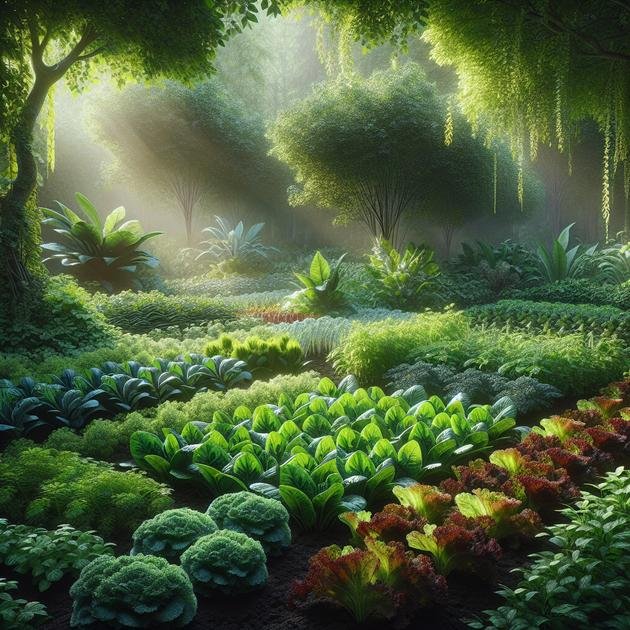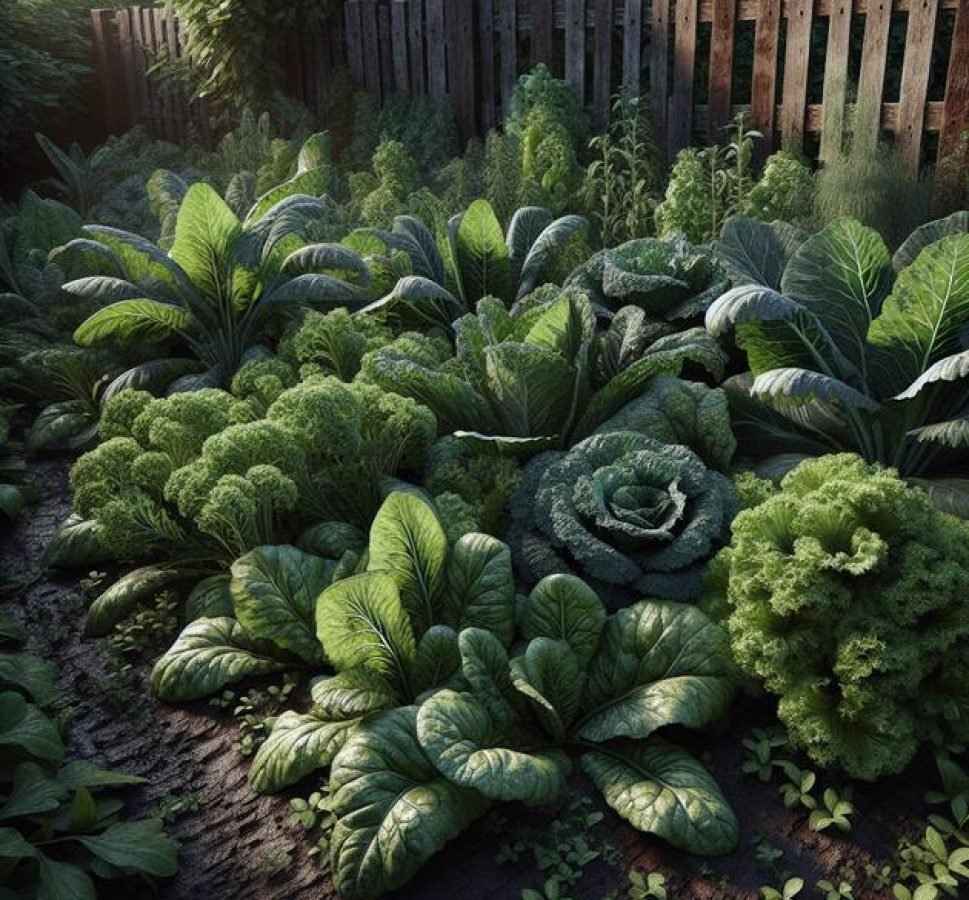Shade vegetable gardening involves selecting low-light-tolerant vegetables, preparing well-draining soil, managing moisture carefully, using companion planting, and monitoring pests and diseases to grow healthy, productive vegetables in shaded areas.
Ever wondered if you can grow a vegetable garden in a shady spot? The truth is, shade vegetable gardening is more doable than you might think — with the right greens and a bit of know-how, your shady patch can become a lush, productive space. Let’s explore what veggies actually thrive where the sun barely peeks.
Understanding shade levels in your garden
Not all shade is the same, and understanding the different levels of shade in your garden is key to successful shade vegetable gardening. There are three main types of shade: full shade, partial shade, and dappled shade. Full shade means an area that receives less than two hours of direct sunlight daily, often resulting from large trees or buildings blocking light completely. Partial shade offers three to six hours of sun, usually filtered sunlight, which is ideal for many vegetables. Dappled shade occurs when sunlight filters through tree leaves, creating a soft, scattered light ideal for delicate greens.
Measuring shade levels can be as simple as observing your garden at different times of the day and noting how much sunlight each spot receives. This information helps you choose vegetables that are naturally adapted to thrive under these conditions. For example, leafy greens like spinach and kale prefer partial to full shade, while root vegetables like beets can tolerate dappled shade.
How to Identify Shade Types in Your Garden
Use simple tools like a sunlight tracker or even a smartphone app to map sunlight exposure. Observe your garden in the morning, afternoon, and evening to get a full picture. Shade from trees often changes with the seasons, so keep notes over time to plan your garden layout effectively.
Understanding the quality and quantity of light your garden receives will save time and increase your success. Some areas may seem too shady but can support certain vegetables when matched properly. Prioritize this step as the foundation for effective shade vegetable gardening.
Top vegetables suited for shade gardening
Growing vegetables in shaded areas is easier when you choose varieties that naturally thrive with less sunlight. Some of the best vegetables for shade gardening include leafy greens like spinach, kale, lettuce, and swiss chard. These plants tolerate low light well and grow quickly, making them ideal for shaded spots.
Root vegetables such as beets, radishes, and carrots also perform well in partial shade, especially if they receive at least a few hours of indirect sunlight. Herbs like parsley, cilantro, and mint can flourish in shade as well, adding flavor to your cooking without needing full sun.
Vegetables to Avoid in Shade Gardens
Some vegetables require full sun to develop properly and should be avoided if your garden has limited light. Tomatoes, peppers, and cucumbers need strong sunlight to produce fruit effectively. Instead, focus on these shade-tolerant options for a fruitful harvest.
Planting a mix of these vegetables suited for shade will help you maintain a diverse and productive garden, even in less sunny areas. Remember to consider the specific light conditions and soil in your garden when selecting crops to maximize growth and yield.
Soil preparation tips for shade gardens

Preparing soil properly is essential for a thriving shade vegetable garden. Since shaded areas often retain more moisture and may have less air circulation, focus on creating loose, well-draining soil that prevents waterlogging while retaining enough moisture for roots.
Start by adding organic matter like compost or well-rotted manure. These materials improve soil texture, nutrient content, and help retain moisture without becoming soggy. Mulching is also beneficial in shade gardens as it preserves soil moisture and keeps soil temperature stable.
Testing and Adjusting Soil pH
Shaded gardens can sometimes have acidified soil, especially under pine or oak trees. Test your soil pH and aim for a range between 6.0 and 7.0, which is ideal for most vegetables. Adjust the pH by adding garden lime to raise it or sulfur to lower it, depending on your test results.
Regularly turning the soil and avoiding compaction will keep the root zone healthy. Avoid heavy foot traffic in planting beds and consider raised beds if the natural soil is poor. This preparation sets a strong foundation for healthy, productive vegetables in shaded conditions.
Watering and moisture management in shade
Watering shade gardens requires a different approach than sunny spots. Shaded areas usually keep soil moist longer due to less evaporation, so overwatering can easily become a problem. It’s important to check soil moisture regularly before watering to avoid waterlogged roots.
Using a moisture meter or simply feeling the soil a few inches down helps determine if your plants need water. Aim to keep the soil evenly moist but not soaked. Water in the early morning to reduce fungal risks and allow leaves to dry during the day.
Techniques for Moisture Management
Mulching is one of the best ways to conserve moisture in shade gardens. Organic mulches like straw, shredded leaves, or bark chips slow evaporation and regulate soil temperature. Mulch also improves soil structure as it breaks down.
Consider drip irrigation or soaker hoses for targeted watering, which delivers moisture directly to roots and reduces surface dampness that encourages disease. Avoid overhead watering when possible.
Proper watering practices paired with good drainage help create an ideal environment for vegetables to flourish in shade, protecting them from stress and promoting healthy growth.
Using companion planting to boost growth in shade
Using companion planting in shade gardens can boost vegetable growth by improving nutrient uptake, deterring pests, and maximizing space. Some plants naturally support each other when grown close together, especially in challenging shade environments.
Best Companion Plants for Shade Gardens
Plant leafy greens like spinach or lettuce alongside herbs such as chives or parsley. These herbs can repel pests that might otherwise affect your vegetables. Root vegetables like radishes grow well near leafy greens and help loosen the soil for better root development.
Interplanting with flowering plants such as nasturtiums or calendula can attract beneficial insects that prey on common pests. This natural pest control reduces the need for chemical interventions.
Maximizing Space and Nutrients
Companion planting helps make the most of limited light by layering plants of different heights and root depths. For example, plant taller vegetables where sunlight filters through, with shade-tolerant herbs or ground covers beneath them.
This method also promotes soil health by encouraging a diverse root system, which improves nutrient cycling. Rotate companion plants annually to maintain soil fertility and prevent disease buildup.
Seasonal planting guide for shade vegetables

Understanding the best times to plant vegetables in shade is crucial for a productive garden. Many shade-tolerant vegetables prefer cooler temperatures and can be planted in early spring or fall. For example, leafy greens like lettuce, spinach, and kale grow best in these seasons when the sun is milder.
Summer planting in shade requires careful selection of heat-tolerant crops such as swiss chard and some herbs, which can handle warmer temperatures while receiving less direct sunlight.
Planning your planting calendar
Start by mapping your garden’s shaded areas and noting seasonal changes in light. Use this information to schedule seed planting or transplanting when conditions are optimal. For winter, certain hardy vegetables like garlic and some root crops can be sown in late fall to overwinter and harvest early spring.
By aligning planting schedules with your garden’s light and temperature patterns, you optimize growth and yield for your shade vegetable garden.
Common pests and diseases in shade gardens
Shade gardens can face unique challenges from pests and diseases due to the cooler, damper environment. Common pests include slugs, snails, and aphids that thrive in moist shade and can quickly damage leafy greens and seedlings.
Managing pests involves regular inspection and physical removal when possible. Introducing beneficial insects like ladybugs helps control aphid populations naturally. Setting up barriers such as copper tape can deter slugs and snails from reaching vulnerable plants.
Diseases common in shade gardens
Fungal diseases are more prevalent in shade gardens because damp conditions favor mold growth. Watch for powdery mildew, leaf spot, and root rot. Ensuring good air circulation and avoiding overhead watering can reduce these issues.
Using resistant vegetable varieties and practicing crop rotation helps prevent disease buildup in the soil. Keeping garden beds clean and removing diseased leaves promptly also protects healthy plants.
With careful monitoring and proactive care, you can manage pests and diseases effectively, keeping your shade vegetable garden healthy and productive.
Harvesting and caring for shade-grown vegetables
Harvesting vegetables grown in shade requires attention to timing and gentle care to ensure the best flavor and quality. Shade-grown vegetables like leafy greens often mature faster and have tender leaves, so watch closely for signs of readiness to pick.
Regular harvesting encourages continued growth, especially for crops such as lettuce, spinach, and kale. Use clean, sharp scissors or garden shears to avoid damaging plants.
Proper care after harvest
Shade-grown vegetables tend to have higher moisture content, so handle them carefully to prevent bruising. Rinse gently with cool water and dry thoroughly before storage to reduce spoilage.
Maintaining your shade garden involves pruning overcrowded plants to improve air circulation and reduce disease risk. Keep soil moist but not soggy, and replenish nutrients with organic fertilizer or compost.
With mindful harvesting and care, your shade vegetable garden can provide fresh, nutritious produce throughout the growing season.
Growing Vegetables in Shade Made Simple
Growing vegetables in shaded areas is possible with the right knowledge and care. By choosing shade-tolerant plants, preparing your soil well, managing moisture, and using smart planting techniques, you can enjoy a productive garden even without full sun.
Paying attention to pests, diseases, and proper harvesting will keep your shade vegetable garden healthy and thriving all season long. With patience and practice, shaded spots can become just as rewarding as sunny ones.
Try these tips and discover how your shade garden can flourish with fresh, tasty vegetables.





